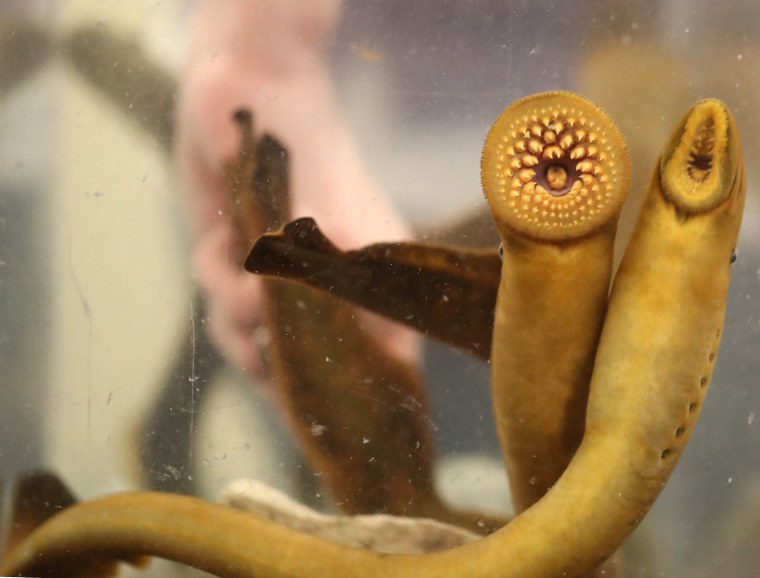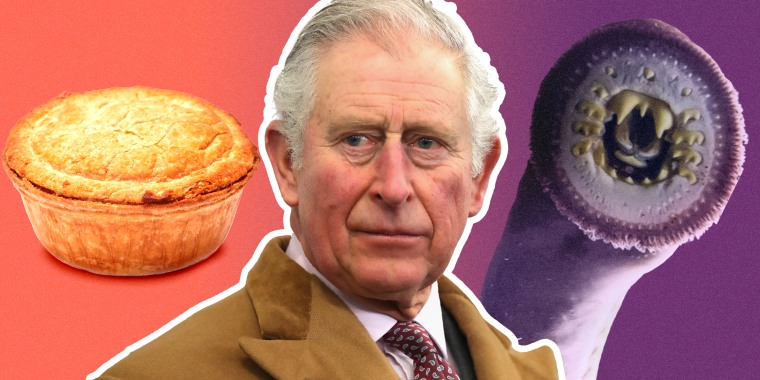Lamprey pie might sound like something straight out of an old English nursery rhyme, but it is, in fact, a dish fit for a queen — or king.
Lampreys are a jawless, parasitic fish best known for their somewhat phallic appearance and funnel-fanged mouth. They might give you the heebie-jeebies, but they do have a longstanding tradition of consumption in the British monarchy dating back to the Middle Ages all of the ways to Queen Elizabeth II. According to lore (and the Reading Museum), for one meal, King Henry I ate lampreys to such excess that he died.
In 1977, lampreys were provided for a pie made for Queen Elizabeth II’s 25th Jubilee. But that was the last time the fish was sourced from the United Kingdom.
These days, lampreys are nearly impossible to find in England, where they once thrived and have now become just about extinct. That’s why, when there was a shortage for Queen Elizabeth II’s 50th Jubilee in 2002, lamprey solicitors turned to Marc Gaden, a deputy executive secretary for the Great Lakes Fishery Commission.
As Gaden explains it to TODAY Food, a tradition dating back to the Middle Ages saw the city Gloucester in the western part of England supply the monarch with a pie made from lamprey as an homage to the sovereign. The tradition was carried out on special occasions such as jubilees and coronations.
“It was a sign of wealth. It was a sign of respect. And in fact, it was the duty of the city of Gloucester to do that, starting in the middle ages,” Gaden explained. “Over time, of course, it became more ceremonial than requirement.”

By the time Queen Elizabeth II had her 50th Jubilee in 2002, the lampreys were threatened, and Gloucester needed to find another source for the monarch’s pies. So, they dialed up the Great Lakes Fishery Commission.
“It was one of the strangest phone calls I ever received on the job,” Gaden recalled of the first time the commission ever received a request. “It was like, ‘You’re gonna think this is funny, but can we have some of your lampreys so we can make a pie to give to Queen Elizabeth?’ I was like, ‘What?’”
Soon after, Gaden received a 101 on the tradition of lamprey pie and was informed of Gloucester’s interest in obtaining lampreys from Canada specifically. As a Dominion country, it’s the next best thing to a country actually part of the United Kingdom.
In the years since, Gaden has helped supply Gloucester with sourcing lampreys for the British monarchy’s pies. They were there to step in for the Queen’s Diamond Jubilee in 2012 and her Sapphire Jubilee in 2017.
“We just froze them and sent them by expedited mail,” Gaden explained. “And then the city of Gloucester had some people that looked back at Old Naval recipes and how to make the lamprey pie, and they made the pie in the old tradition.”
Gaden clarified that lamprey pies were never meant for consumption.
With Queen Elizabeth’s passing, it’s uncertain when the new King Charles will receive his coronation — it may not be until spring or summer of next year, according to royal expert Daisy McAndrew. Still, if Gloucester finds itself in need of lampreys, Gaden says the fishery commission will be there to lend a hand.
“It is quite possible that they will need to look to the Great Lakes again to supply the lampreys if they’re going to produce a pie,” he said. “Lampreys are still threatened in the U.K. We have a very good relationship. We’ve made some great friends there, and it’s been very enjoyable over the past 20 years to work with them. If they decide that they’re going to present a pie to King Charles for his coronation, we stand ready and look forward to being the purveyors of those lampreys again.”

